You’re taking me for a ride…
11 minute read
December 23, 2022, 12:57 PM
On Friday, November 18, Elyse and I went out to Ashburn for a ride on the new Silver Line extension. This was the conclusion of a long-awaited public works project, bringing the Metro Silver Line out to its intended western terminus in Ashburn, Virginia. You may recall that I did a similar adventure with my friend Matthew on the Silver Line when it opened in 2014. I couldn’t attend the opening day events because I had to work, but Elyse did. She managed to get a ticket to the VIP event by asking nicely, much like I did in 2014, and she had a blast. She got to meet Metro General Manager Randy Clarke, and even got to sound the horn on a 7000-Series railcar.
For this adventure, our day started out with an open house event at the Dulles rail yard, which guided our plans to an extent. Driving over, we listened to “Escapee” by Architecture in Helsinki, which Metro had used for a promotional video for the opening of the first part of the Silver Line. For the first ride on the extension, that seemed fitting. At Dulles yard, we got a tour of the new facility and had a catered lunch. The new facility was quite nice, and we both commented that it looked more like a community college building than a train depot. Lunch was from Panera, we got Silver Line t-shirts, I got my Silver Line pennant to go with the one from 2014, and we also got a special Silver Line cookie:
One thing that we noticed about the Dulles rail yard was how low the planes came in over it. My first thought was that the parking lot would be the perfect spot for planespotting, but there will be no planespotting there, unfortunately.
Finishing up at the rail yard, we headed out to Ashburn station in order to properly fan the line. This was not my first time at Ashburn station, mind you, as I had flown my drone over the not-yet-completed station in August 2021, and I also got to visit it while simulated service was going on back in October. We parked in the garage at Ashburn, going all the way up to the top level, because why not. The first things that I noticed were the markings for the parking spaces for fuel-efficient cars:
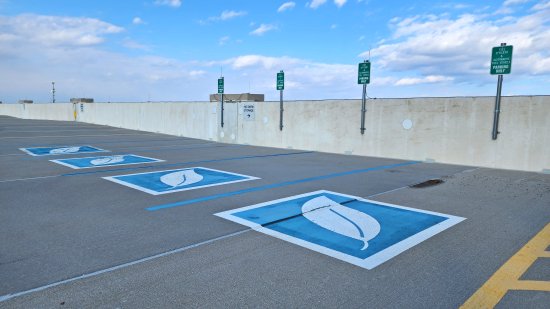
That’s different. I initially thought that those were handicapped spaces, but then much to my surprise, those were leaves rather than the wheelchair icon.
I also got some photos of the station from the garage:
We then headed down the elevator to the station, where I got more photos:
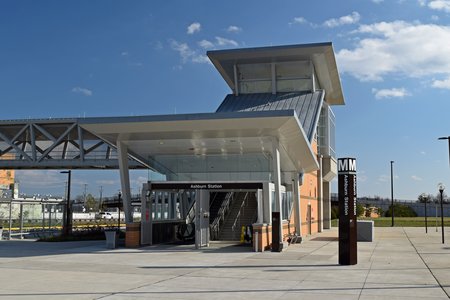
Entrance pavilion on the south side of the station, similar to that found on the earlier stations.
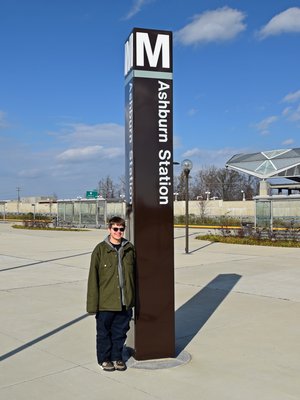
Elyse poses with the station entrance pylon at Ashburn.
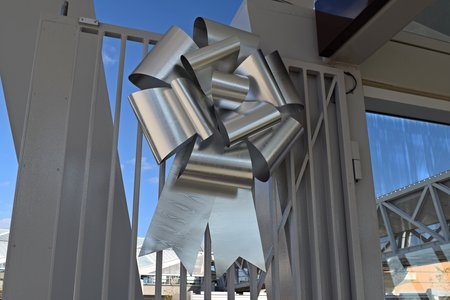
The grand-opening ribbons on all of the stations. Unlike the first phase, which used red ribbons, this time, the ribbons were larger, and silver-colored, which seemed fitting, though they didn’t stand out as well as the red ones did against the largely gray and white structures.
Then we went in:
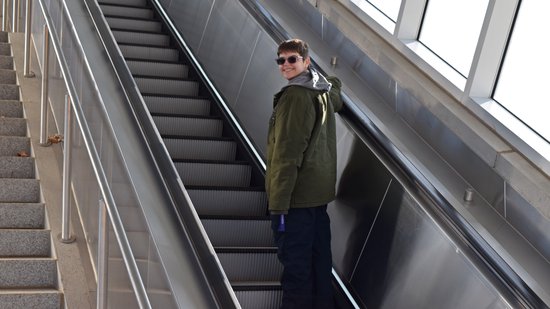
Elyse rides the escalator into the station.

Elyse procured a Silver Line SmarTrip card from the machine at Ashburn.
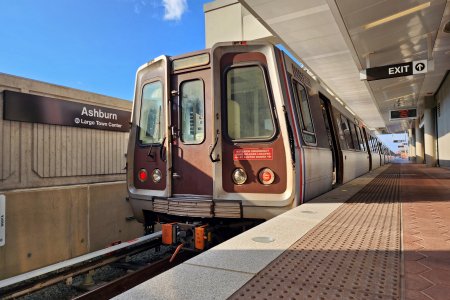
Our train, berthed on the platform at Ashburn.
Since we had some time before it departed, I took a moment to notice some differences between the earlier stations and the new ones. Generally speaking, out of six new stations, five of them took the same form as Tysons, Greensboro, and Wiehle-Reston East, i.e. with a high arched roof over the platform, and access via pedestrian bridges over the highway. Dulles, meanwhile, was architecturally unique, as it was designed to harmonize with the midcentury modern aesthetic of the airport itself. So other than Dulles, there weren’t that many surprises.
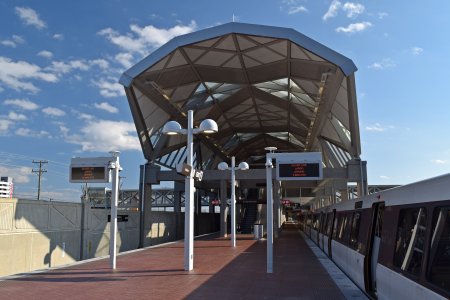
Architecturally, the stations look just like Wiehle. Big arched roof, center platform with pavers, and old-style PIDS screens (more on that last point in a moment).
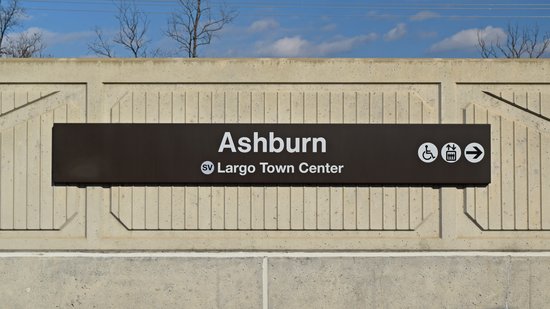
The trackside signage is similar to that being installed elsewhere in the system, except that the station name is a bigger size (compare to signage at Wiehle-Reston East, installed in 2020). Note the use of “Largo Town Center” as the destination rather than the more recent “Downtown Largo” name.
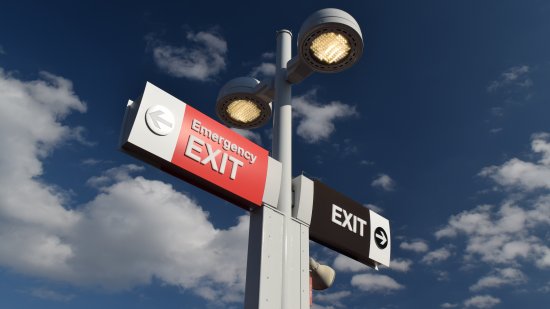
Other signage and such is the same as in the earlier Silver Line stations.
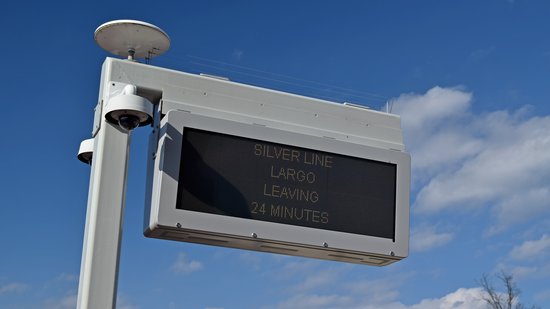
The PIDS screens on the extension, meanwhile, are both a step forward and a step back as far as design goes, and a reminder of how long this project had been going on. It’s a step forward in that these PIDS screens take a much more streamlined appearance and have smaller text than the PIDS screens in the earlier Silver Line stations, where they were much boxier, and the text was relatively chunky. However, it’s a step back and a reminder of how long this project had been going on because this isn’t like the newer PIDS screens that have been installed since 2019 in the stations that have been renovated, which are big LCD monitors. Rather, this is the older style of PIDS screens that all of the older stations had originally, which have more limited functionality compared to the LCD screens. And before you ask, no, I don’t know what that flying saucer-like thing is on top of the pole.
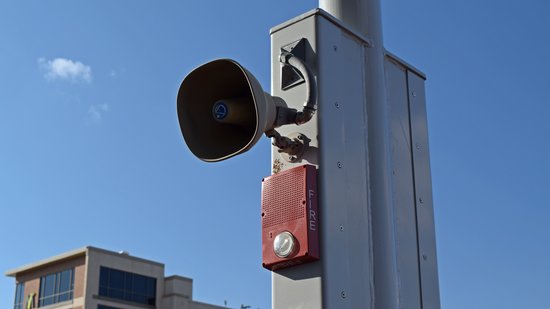
As far as mass notification goes, the PA speakers are still Atlas Sound, which is the same as on the older Silver Line stations. However, while the older Silver Line stations used System Sensor SpectrAlert Advance speakers and strobes for fire alarm notification, the new stations use Edwards Genesis WG4 speaker/strobes. I always found the choice of System Sensor devices in the first phase to be quite unusual, because Metro typically uses Edwards equipment as far as fire alarms go. Seeing Edwards on the extension made a lot more sense because that’s typical for Metro.
Leaving Ashburn, we headed directly to Wiehle-Reston East station. Elyse questioned my desire to go to Wiehle, since that was the Silver Line’s original terminus. But for sake of completeness, we had to do it, because to not touch the rest of the system would mean that we would miss a stretch of track, and we just could not have that. Then we would do all of the other new stations on our way back towards Ashburn.

At Wiehle, I had to get a look at this: the PIDS displaying the next three trains going through Wiehle now that it’s a through station and not a terminal anymore. Also, note the boxier shape of the PIDS at Wiehle compared to Ashburn, and the thicker font.
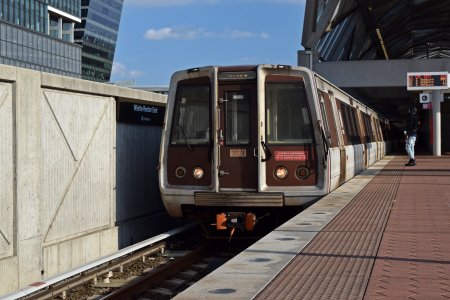
Our chariot arrives at Wiehle to take us to Reston Town Center and beyond.
The way that Elyse and I explored the new extension was the same as we’ve done previous station-fanning trips in the past, as well as when Matthew and I fanned the Silver Line on opening day back in 2014: ride in, exit the train at each station, go through the faregates, see the station as well as the area around it, and then board a train to go to the next one. Considering that the trains were running on a 15-minute headway and it would be completely dark out by 6:00, my goal was to spend about 15 minutes at each station and then keep it moving, i.e. drop back one train at every station, so as to get daylight at each station. We didn’t necessarily meet this, but it still worked out, and we got to see all of the six new stations.
Most of these stations looked pretty similar to each other, architecturally, so I’m not going to cover every station individually, per se, but I’m going to touch on the highlights, as well as the various other stuff that we did.
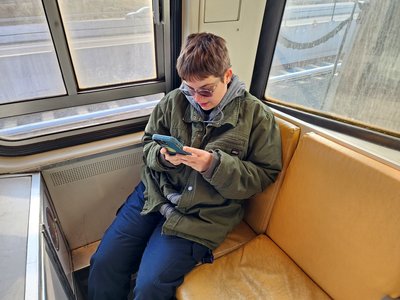
Elyse checks something on her phone while we ride car 2056 to Reston Town Center station.
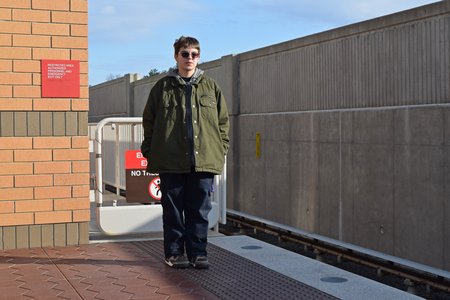
Elyse stands at the eight-car mark on the Largo-bound side at Reston Town Center.
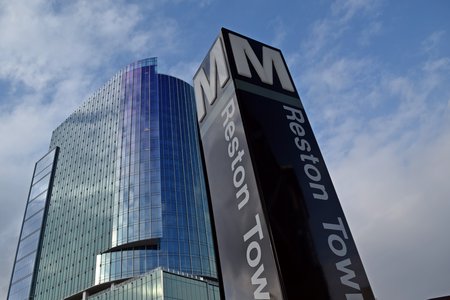
Station entrance pylon at Reston Town Center.
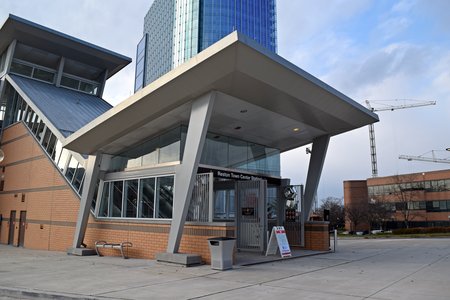
North entrance to Reston Town Center station.

Fairfax Connector bus 9781, a 2008 Orion VII, running the RIBS 4 route.
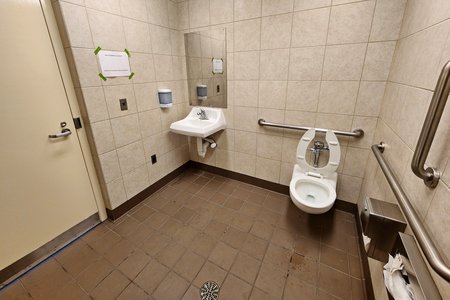
Restroom at Reston Town Center station. All of the new stations have restrooms located within fare control on the mezzanine level, just past the kiosk.
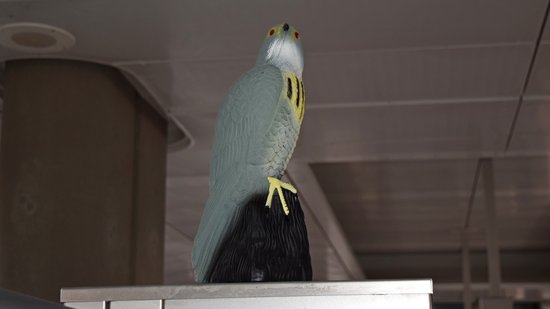
Falcon decoy, intended to prevent birds from roosting and leaving their droppings all over the station. This is a Bird-X product, and it can be obtained for about $17.50.
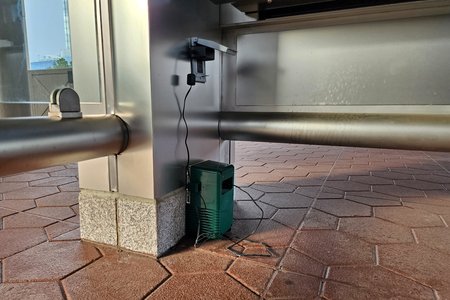
This device produces bird sounds, working along with the falcon decoy to scare the birds away.
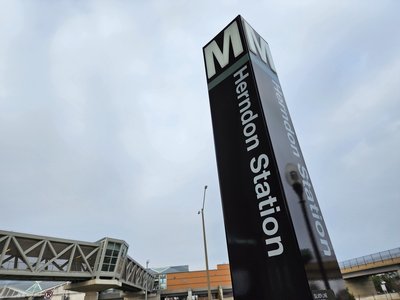
Station entrance pylon at Herndon.
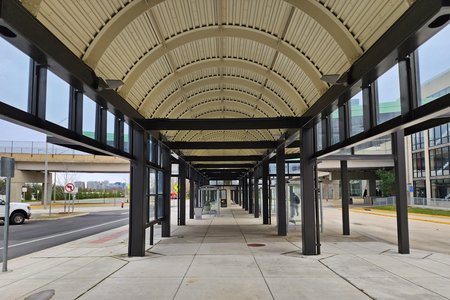
This canopy at the bus facilities at Herndon station is fairly unique. The barrel vault kind of reminds me of Monroe station on the Red Line in Chicago.
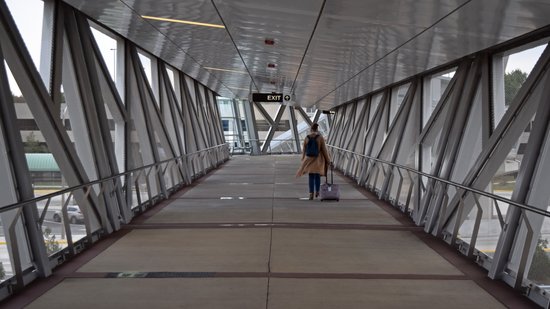
Pedestrian bridge over the Dulles Toll Road at Herndon station. These are identical to the bridges in the earlier stations.
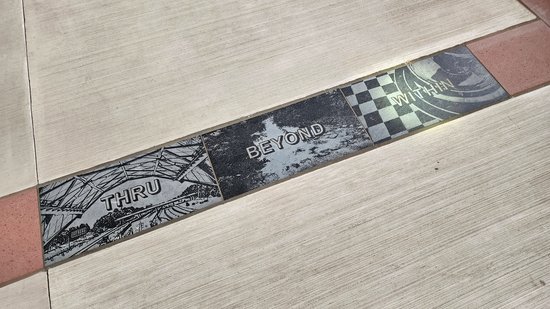
The station artwork at Herndon is embedded into the floor of the pedestrian bridge, with panels similar to these throughout the length of the bridge embedded into the floor. They face different ways for people going in and out of the stations, but despite looking at and photographing the entire series of panels facing inbound, and then looking at them again later, I couldn’t make out any coherent message. But it’s possible that it’s not supposed to be one coherent message.
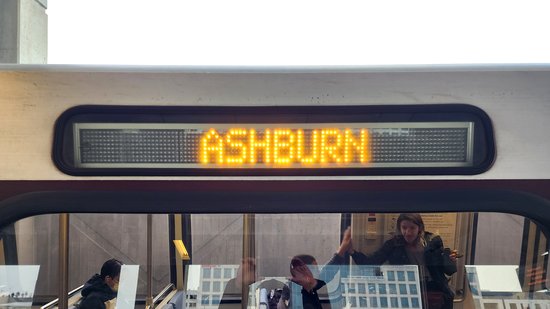
“ASHBURN” signage on a 6000-Series railcar. Not all of the trains had been reprogrammed with the final “Ashburn” name when the line opened, which meant that some trains were going up the line with the placeholder name of “ROUTE 772” on their signs.
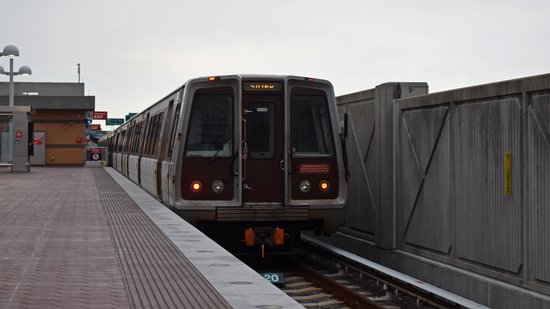
A train departs Innovation Center station, heading inbound.
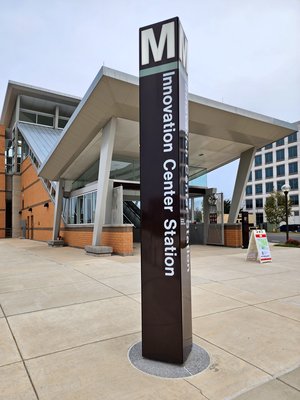
Innovation Center station entrance pylon.
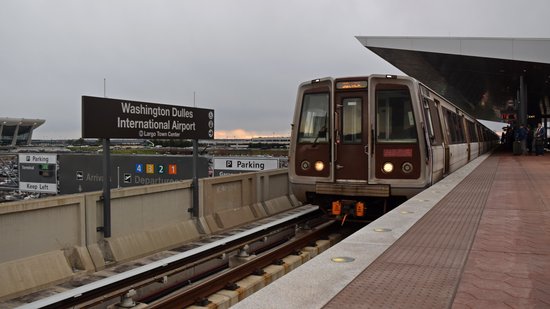
A Largo-bound train arrives at Dulles Airport station. Getting this shot, I couldn’t help but think, “This is what we’ve been waiting for all of these years!”
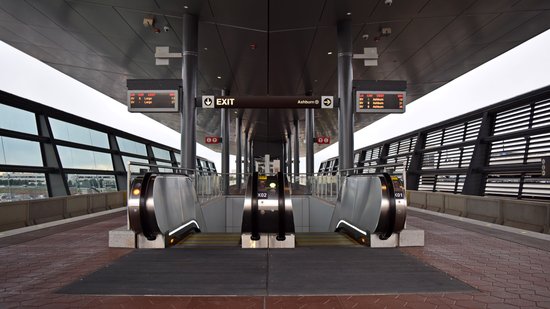
Dulles is the only station on the extension that’s architecturally unique. It is gray in color to harmonize with its surroundings, and the canopy is V-shaped to harmonize with the surrounding architecture. Additionally, there are screens on both sides of the stations, with glass panels on the airport-facing side (Largo-bound), and slats on the garage-facing side (Ashburn-bound).
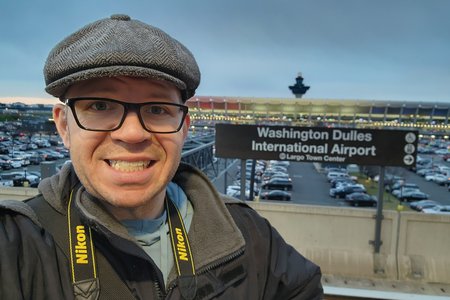
Obligatory Dulles Airport selfie.
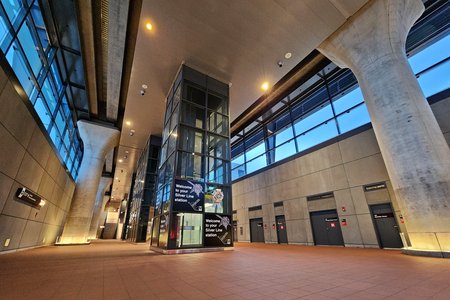
Dulles Airport is also the tallest station on the Silver Line extension, with a very high ceiling in the station mezzanine.
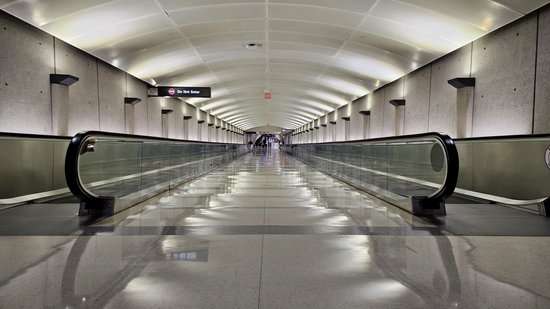
Tunnel to the airport from the Metro station, with moving walkways on either side.
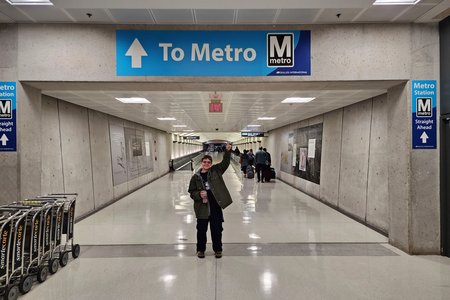
Elyse points at a sign reading “To Metro” at Dulles Airport.
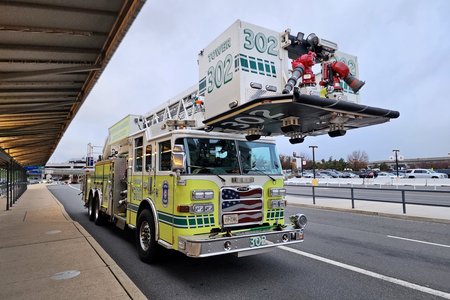
We spotted an MWAA fire truck outside of Dulles Airport. No idea what it was doing here, but we photographed it nonetheless.

Dulles Airport station at sunset.
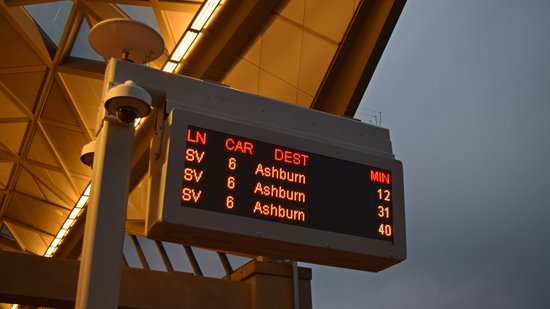
PIDS screen at Loudoun Gateway, in typical style for this section of the Silver Line.
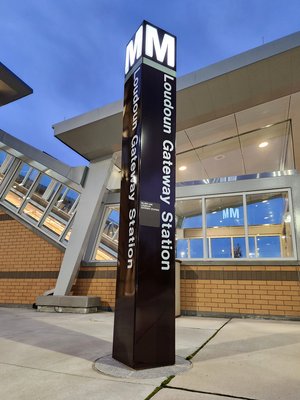
Station entrance pylon at Loudoun Gateway station.
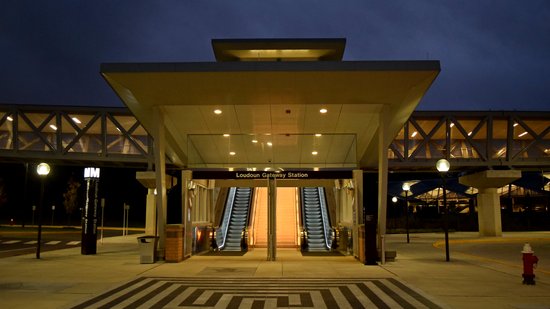
Entrance to Loudoun Gateway station. Unlike the other stations on the Silver Line extension, Loudoun Gateway only has access on one side of Route 267.
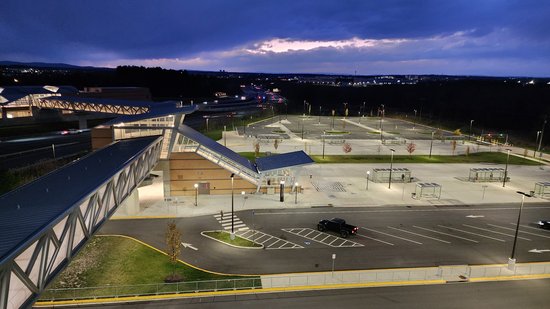
View from the top of the parking garage at Loudoun Gateway. Because of its proximity to the airport, I suspect that Loudoun Gateway station will always be primarily a park and ride, but you never know. One thing that I noticed, though, is that Loudoun Gateway station seems like it will be a good spot for planespotting, as airliners fly low past here on their approach to Dulles. Elyse and I have discussed riding back out here in order to photograph planes.
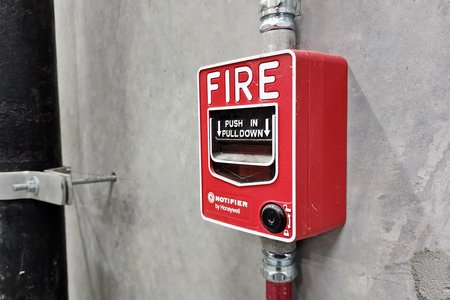
Notifier pull station in the parking garage at Loudoun Gateway. This surprised me, because Metro tends to use Edwards equipment, and the Silver Line extension in general uses Edwards all over it.
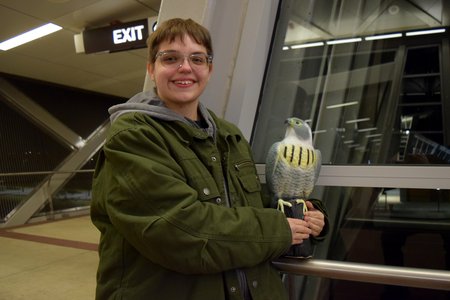
Returning to Ashburn at the end of our adventure, Elyse poses with one of the falcon decoys.

Back home after our adventure was over, I pose for a selfie in my new Silver Line shirt.
And that was our day! We had a good time fanning the extension, and my transit nerd cred is still intact, as I have once again visited what is now all 97 Metro stations on the system. We also stopped by my friend Matthew’s house on the way home and gave him a Silver Line pennant and a Silver Line cookie. Now we need to come back out here during warmer months to fan again on a day with less cloud cover, and where we’re not racing against the clock to get it all before sunset, and also go out and planespot from the parking garage at Loudoun Gateway.
Categories: Airplanes, Fairfax County, Loudoun County, WMATA
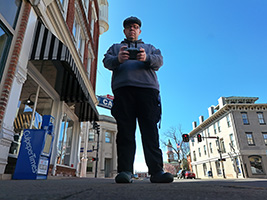







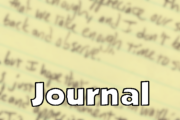


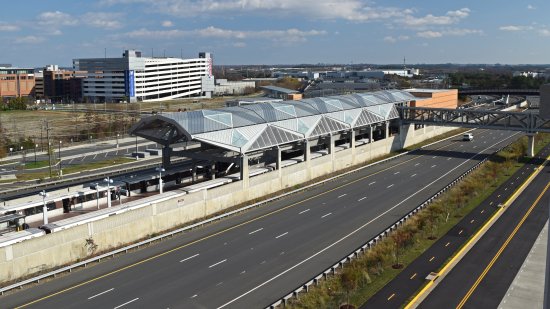
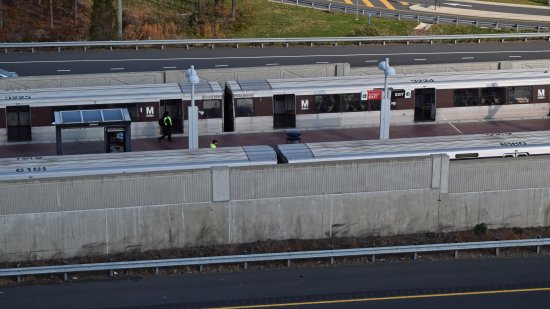
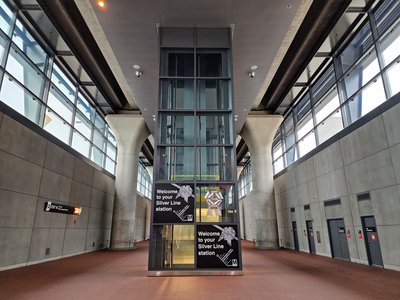
Leave a Reply